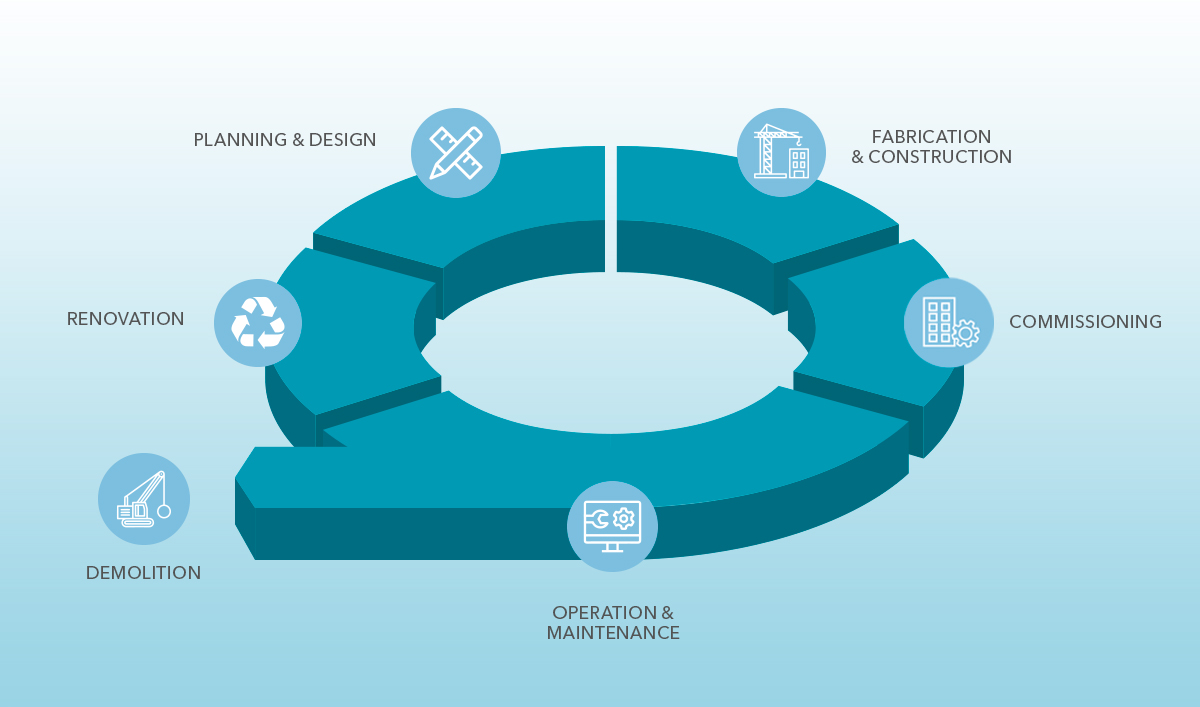BIM is changing the global construction business across water utilities, industry and building services markets. BIM is also improving the way parties within the value chain (such as investors, owners, facility managers, consultants, planners, contractors, distributers, wholesalers and manufacturers) work together in a common digital data environment to create a more sustainable life cycle.

BIM is not only a 3D file of a product. It is a structured method of working in a digital environment to collect, manage and exchange information throughout an asset’s lifecycle (e.g. water utility plant, commercial building, industrial factory). Graphical and non-graphical data from single asset components (e.g. pumps) are combined to complete digital asset models. Resulting in digital twins that live in co-existence with their physical twins.
Space, carbon footprint, energy consumption, operational effectiveness and life cycle costs can already be evaluated and optimized in the planning and design phase of the project. The improved project plans and higher ROI provide owners and investors with a building or infrastructure that is tailored to their exact needs.
Contractors use BIM to collect all the necessary components for simplified calculations, project management, purchasing and activity planning. Ensuring timely delivery of the project and within budget. Thanks to the BIM designed assets, there are no unpleasant surprises during the construction and commission phase.
All relevant information of a building’s systems and single components is provided by BIM in a compact and clear digital data package. Helping operators and facility managers with their operations, maintenance and future renovations. Furthermore digital operating models (digital twin) of the physical asset can be created to help operators and owners in making better decisions for continuous system optimization (e.g. HVAC optimization). Making assets more efficient, reliable and available at the lowest possible life cycle costs. And that is the future of Smart Buildings.
Xylem is leading the way in the BIM journey as part of our mission to build a sustainable future by delivering digital solutions. We do so by working closely with our business partners and customers and always expanding and innovating our portfolio and services.
Building Information Modelling - Benefits for consultants, architects and planners
BIM has taken the construction industry by storm. Consultants, architects and planners choose BIM for its results in the project planning and design phase. Space, carbon footprint, energy consumption, operational effectiveness and life cycle costs can be simulated and optimized in an early stage of the project. Resulting in improved project plans and a substantial higher return of investment (ROI). Xylem asked planners worldwide about the importance of BIM for their current business. An overwhelming 91% indicated that BIM is now mandatory in the construction business. In the United Kingdom, Norway, Denmark and Finland BIM is already required in the design and construction of public buildings and infrastructure. Germany, Italy, France, Spain, Netherlands are the next countries that will be mandating BIM in Europe based on European Directives*.
*By 18 April 2016, EU countries had to transpose the following three directives into national law: Directive 2014/24/EU on public procurement, Directive 2014/25/EU on procurement by entities operating in the water, energy, transport and postal services sectors, Directive 2014/23/EU on the award of concession contracts.



